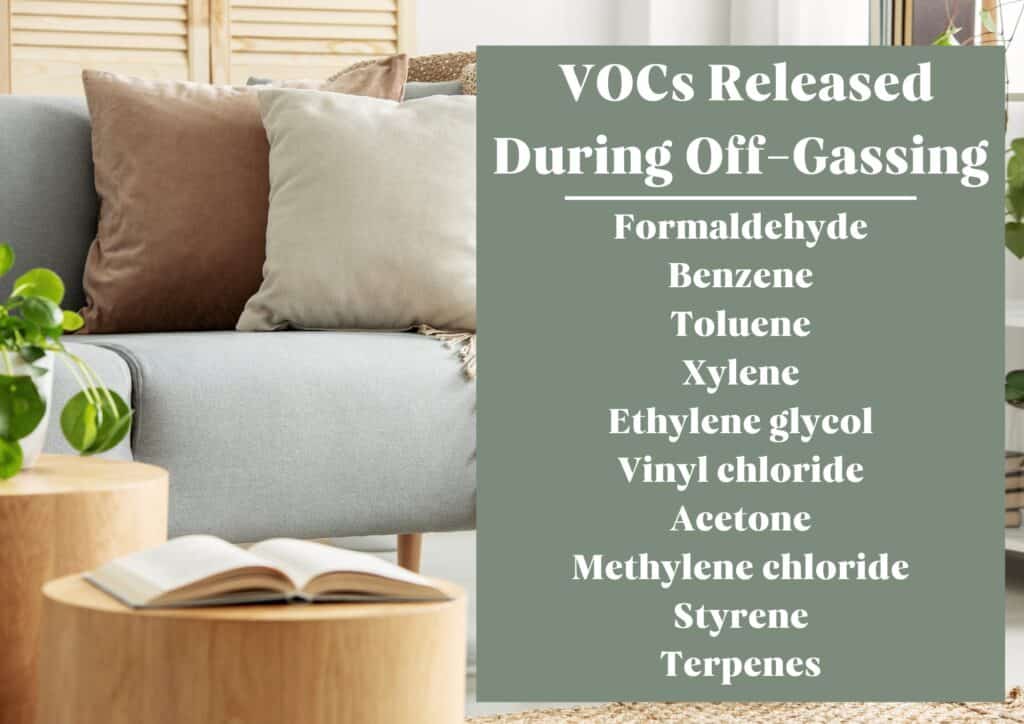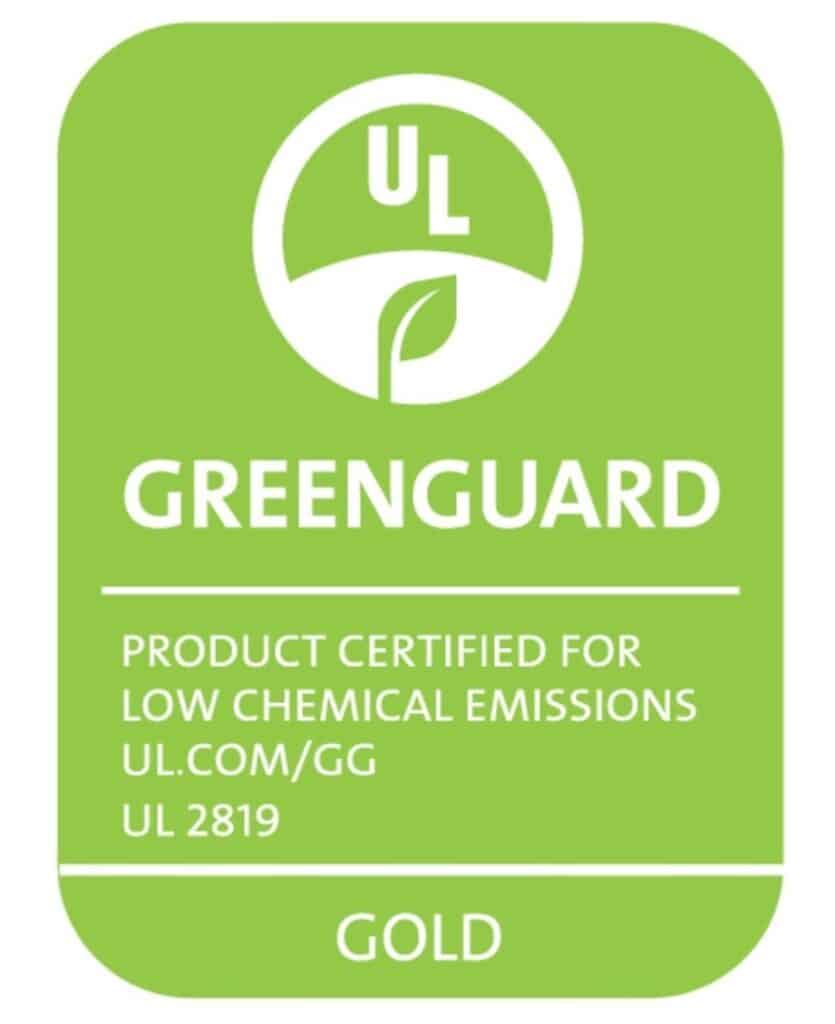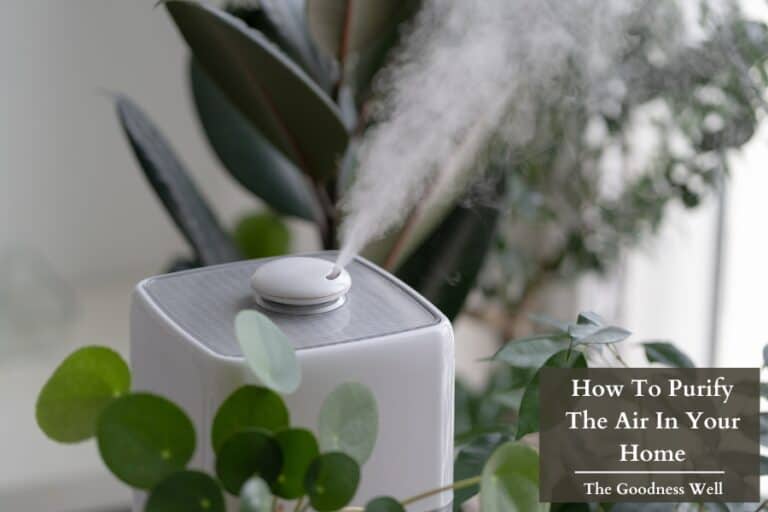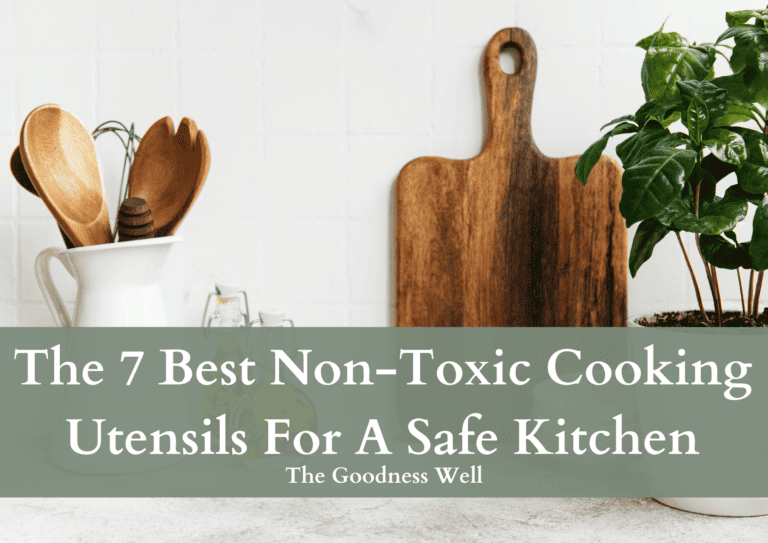What is Off Gassing? How it Affects Your Health and Home

Picture this… You buy a beautiful new piece of furniture, bring it home, and while it looks spot on, there’s this… smell.
…That smell is the off-gassing chemicals that are harmful to your health…
But what is off-gassing and how does it really affect your health?
Our teams did the research and found the answers📋
TD;DR
Off-gassing refers to the release of volatile organic compounds (VOCs) and other substances into the air. This is recognizable in new products as the “new car smell” or “new furniture smell”. This can be harmful because these emitted chemicals can contribute to indoor air pollution, potentially causing health issues like headaches, respiratory problems, and other health risks.
What is Off-Gassing
Off-gassing is when certain materials like VOCs are emitted into the air.
How fast or slow substances are off-gassed can be influenced by several factors. When exposed to higher temperatures or increased humidity, many materials will off-gas a lot faster.
For example, when new furniture made of synthetic materials is placed in a warm room or direct sunlight, it will likely off-gas faster.
Recognizing and addressing off-gassing is crucial, especially for products and furniture we introduce into our homes.
What Does Off-Gassing Smell Like? 💨
That smell.. a kind of smelly smell…that smells…smelly…
lol sorry, I couldn’t help myself. Anyways…
It’s typically a strong chemical or “new” scent. It’s the smell of various compounds breaking down at room temperature, releasing odors we associate with newness.
While the “new furniture smell” is a common indicator of off-gassing, some released gases may be odorless but still harmful.
And yes that beloved “new car smell”… that’s also a sign of chemicals being off-gassed.
Is Off-Gassing Dangerous?
Off-gassing can be more than just an annoying or overbearing smell. Prolonged exposure to VOCs can lead to a variety of minor to very serious health issues.
Most Common Off-Gassing Symptoms:
- Irritation in the eyes, nose, or throat.
- Headaches.
- Dizziness.
- Skin reactions.
- Worsening of asthma symptoms.
Volatile Organic Compounds (VOCs)
Volatile Organic Compounds (VOCs) are carbon-based chemicals that, due to their molecular structure, have a high vapor pressure even at room temperature.
This high vapor pressure leads to the molecules evaporating into the air, turning into a gas.
Here are some of the common VOCs released during off-gassing and their associated health risks:

VOC Uses and Health Risks
1. Formaldehyde
- Commonly found in: Pressed wood products (like MDF, plywood, and particleboard), certain insulations, glues, and adhesives.
- Health Risks: Irritation of the eyes, nose, and throat, asthma symptoms, and at high levels, exposure may cause some types of cancers.
2. Benzene
- Commonly found in: Tobacco smoke, stored fuels, automobile service stations, and emissions from industrial burning processes. It can also be found in glues, paints, and furniture wax.
- Health Risks: Drowsiness, dizziness, rapid heart rate, headaches, tremors, confusion, and at very high levels, unconsciousness. Long-term exposure can lead to blood disorders, including leukemia.
3. Toluene
- Commonly found in: Paints, paint thinners, adhesives, synthetic fragrances, and nail polish removers.
- Health Risks: Irritation to the eyes and respiratory tract; it can also affect the central nervous system causing symptoms like dizziness, headaches, or even unconsciousness with high exposure.
4. Xylene
- Commonly found in: Printing, rubber, leather, and paint industries, tobacco smoke, and vehicle exhaust.
- Health Risks: Irritation of the eyes, nose, and throat, dizziness, confusion, and potential effects on the liver and kidneys with prolonged exposure.
5. Ethylene glycol
- Commonly found in: Antifreeze, de-icing solutions, paints, and some solvents.
- Health Risks: Eye and respiratory tract irritation, possible kidney and liver damage with prolonged exposure.
6. Vinyl chloride
- Commonly found in: PVC products, including PVC piping, vinyl flooring, and other related products.
- Health Risks: Dizziness, drowsiness, and at extremely high levels, loss of consciousness. Long-term exposure can increase the risk of liver, lung, and brain cancers.
7. Acetone
- Commonly found in: Nail polish removers, certain cleaners, and paint thinners.
- Health Risks: Irritation to the eyes, nose, and throat, headaches, and confusion.
8. Methylene chloride
- Commonly found in: Paint strippers, adhesive removers, and aerosol spray paints.
- Health Risks: Can affect brain functions causing dizziness, nausea, numbness, and even unconsciousness.
9. Styrene
- Commonly found in: Plastic and rubber factories, insulation factories, and those that use styrene-based resins.
- Health Risks: Irritation to the eyes, skin, and respiratory tract, and it can affect the nervous system.
10. Terpenes (like limonene)
- Commonly found in: Essential oils, cleaning products, and air fresheners.
- Health Risks: Can irritate the eyes and respiratory system and may contribute to indoor ozone production.
The level of danger often depends on the type of chemical being released and the duration of exposure.
However, any level or any toxic chemical is still toxic, and nothing you want lingering around in your home uninvited.
How Can You Avoid Products That Off-gass?
To avoid products that off-gas, choose items made with natural materials like solid wood, organic cotton, or wool, which are less likely to emit harmful chemicals.
Look for products labeled “low-VOC” or “no-VOC,”, especially in paints, adhesives, and furnishings.
Products that are certified by environmental standards, such as Global Organic Latex Standard (GOLS), Global Organic Textile Standard(GOTS), and GREENGUARD Gold are great indicators you’re getting a safe product.



If you do end up with a product that off-gasses (which is inevitable by the way)… you can speed up off-gassing safely which will quickly release chemicals in a way that can be ventilated and regulated.
In short, this will lower your exposure to chemicals by quickly getting rid of them instead of chemicals slowly off-gassing over an extended period.
Frequently Asked Questions
VOC smog happens when VOCs react with sunlight and other elements like nitrogen oxides to create a visible haze, often seen as a murky layer over cities.
It’s harmful because it can worsen air quality, leading to respiratory problems and other health issues, especially in urban areas.
To know if something is off-gassing, look for a noticeable chemical smell, similar to a “new car” or “new furniture” scent.
You might also experience physical symptoms like headaches, eye, nose, or throat irritation, or allergic reactions when around new products or in recently renovated spaces.
Long-lasting odors or symptoms in the presence of new materials, furnishings, or after using certain products are key indicators of off-gassing.







